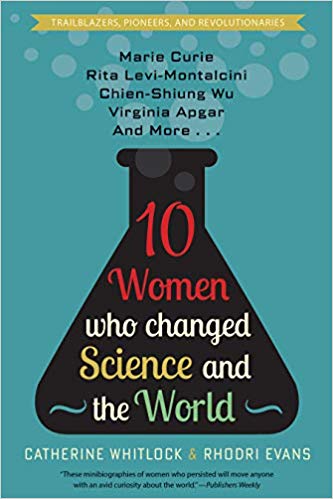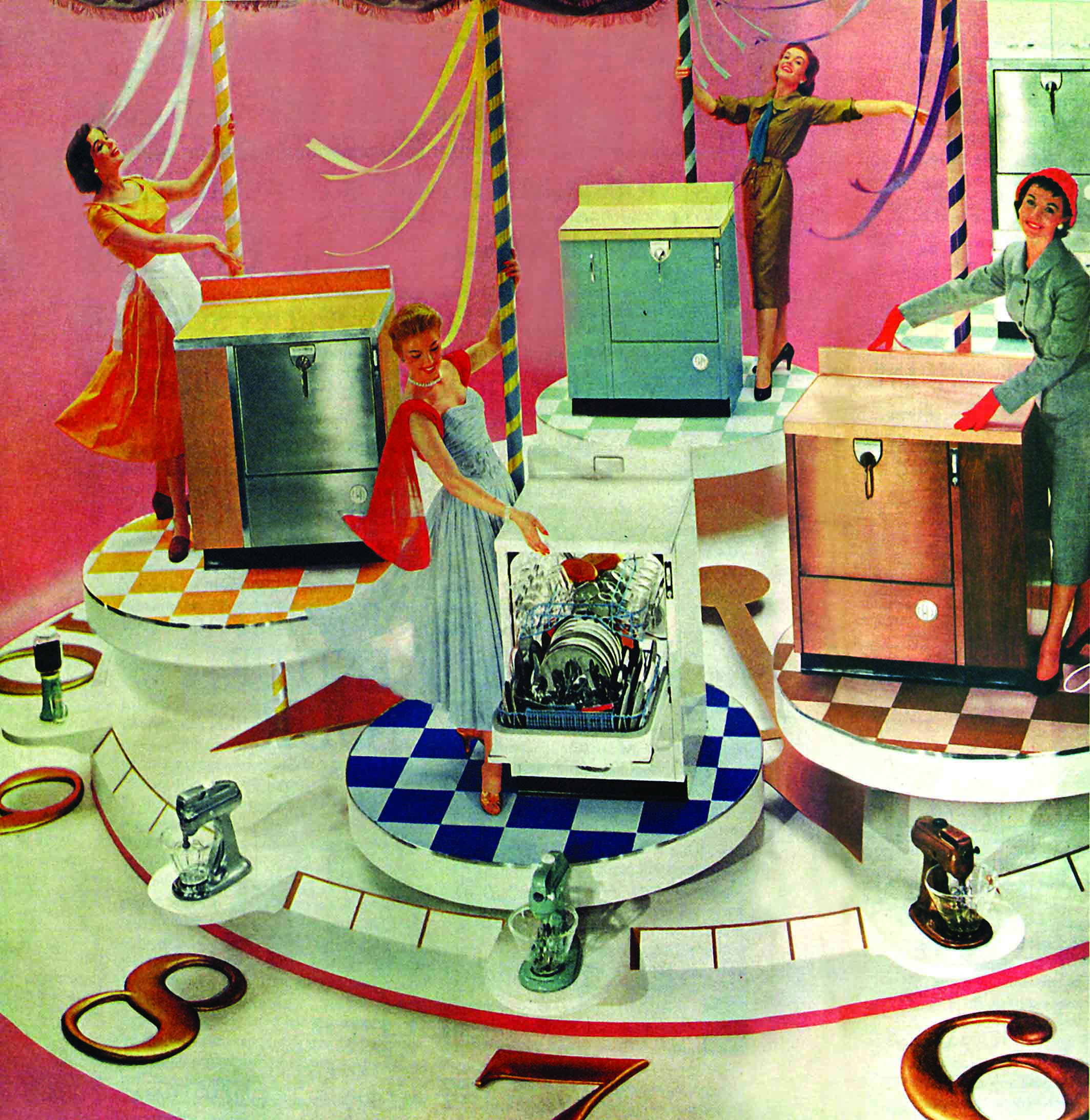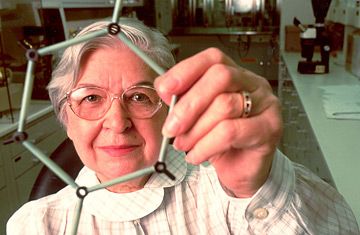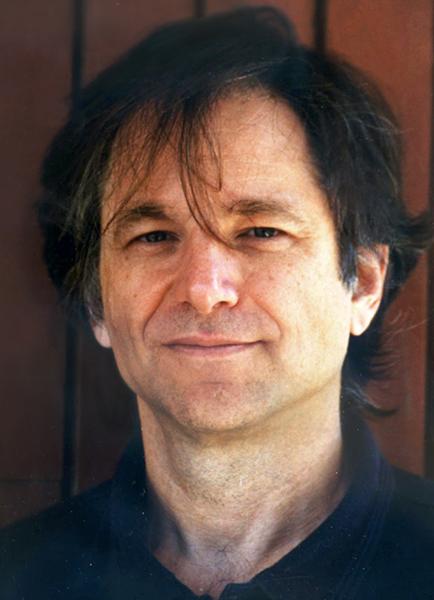Whether she was bicycling with a colleague’s child, cheering at a baseball game, or taking flying lessons, Virginia Apgar always kept the following things on her person: a penknife, an endotracheal tube, and a laryngoscope, just in case someone needed an emergency tracheotomy. Even when she was off-duty, she was on: “Nobody, but nobody, is going to stop breathing on me.”
News/Blogs
The world was stunned when the Russians launched Sputnik in 1957 and successfully orbited the earth with two satellites. Luckily for America’s efforts to catch up, a mathematician named Irene K. Fischer had been working for five years to build the nascent science of geodesy, the measurement and representation of earth in three dimensions.


For as long as she could remember, Sara Blakely wanted to follow in her father’s footsteps and become a trial attorney. But she didn’t do well on the LSAT and skipped law school. Her job at Disney World, clowning in a chipmunk suit, didn’t work out well either. So Sara sold fax machines door-to-door for seven years and discovered she was good at sales. She dreamed of marketing something of her own creation.
A pair of pantyhose, some scissors, and a good dose of ingenuity led Sara Blakely on the road to success.
Bette Nesmith Graham didn’t set out to earn millions: she just needed a way to correct her frequent typing mistakes as a secretary at the Texas Bank & Trust in Dallas in the early 1950s. In the process this single mother invented and patented Liquid Paper, a product that transformed the working lives of millions of typists overnight. Her invention’s effectiveness lies in its simplicity. “Like a safety pin or a rubber band,” she said, “we wonder how we ever got along before without it.”
IT’S THE OLD STORY: A glamorous movie actress and a brash avant-garde composer get together to invent and patent a device that controls torpedoes by radio. Naturally their foray into military-technology innovation affects the way defense satellites are designed in the next half-century.
IT’S THE OLD STORY: A glamorous movie actress and a brash avant-garde composer get together to invent and patent a device that controls torpedoes by radio. Naturally their foray into military-technology innovation affects the way defense satellites are designed in the next half-century.
It pays to be organized.
As a young information specialist with the Stanford Research Institute (SRI) in the 1960s, Elizabeth Feinler was arranging an enormous amount of data using 3x5 index cards when she thought, “This work needs a computer.” She teamed up with a programmer to build an early bibliographic system on a time-shared computer.
Ruth Davis was “the real deal.”
A pioneer in satellite and computer technology, she excelled in what was then a “man’s world” but never boasted about her accomplishments. Ruth always emphasized that it’s what you do and not who you are that’s important. In one interview she said, with a bit of marvel creeping into her voice, “You go to work in the morning, come home in the evening after you worked on something that had never been done before.”
I was a six-year-old Brownie in Las, Cruces, New Mexico, when I first discovered my passion for space and astronomy. I was on a camping trip with my Girl Scout troop, and my troop leader noticed my fascination with the night sky. She pointed out the stars to me and taught me how to identify constellations. She later encouraged me to earn my science badge, which I did by building an Estes Rocket, after much trial and error.

JOSEPHINE GARIS COCHRANE seemed to have reached the low point of her life one Sunday in about 1880, when she went to church in the midst of an illness and heard the pastor deliver her eulogy. Whatever the intent of his wistful farewell, entitled “Hoping, Waiting and Resting,” Mrs.
WHEN STEPHANIE LOUISE KWOLEK RECEIVE D HER B.S., WITH a major in chemistry, from the Carnegie Institute of Technology (now Carnegie Mellon University) in 1946, she didn’t have enough money to pursue her dream of going on to medical school. So she accepted a research job with DuPont, hoping to eventually get a medical degree.
D HER B.S., WITH a major in chemistry, from the Carnegie Institute of Technology (now Carnegie Mellon University) in 1946, she didn’t have enough money to pursue her dream of going on to medical school. So she accepted a research job with DuPont, hoping to eventually get a medical degree.
“This is the first time a woman has ever given a presentation in this room,” Grace Hopper was once told at the Pentagon, as she was escorted to a meeting with the Secretary of the Navy. As one of the highest-ranking females ever to serve in the Navy, she was a rarity. But not as rare a bird as an octogenarian in the computer industry, another distinction she would hold.
The American Civil War, causing more than 600,000 combatant deaths and many times that number of wounded, crippled plus those with PTSD, need not have happened. The framers of the U.S. Constitution knew well that the representatives from the Southern states would not sign unless language on slavery was omitted. The looming issue of slavery was very apparent. A more visionary Federal government could have fostered a technology to free the slaves.
The air at 20,000 feet above Schweinfurt, Germany, was icy cold, but the bombardier crouching in the nose of the B-17 hardly noticed. Sweat poured down his forehead as flak rocked the aircraft, periodically spattering his compartment's Plexiglas bubble with fragments. He focused intently on preparing for the final bombing run.



